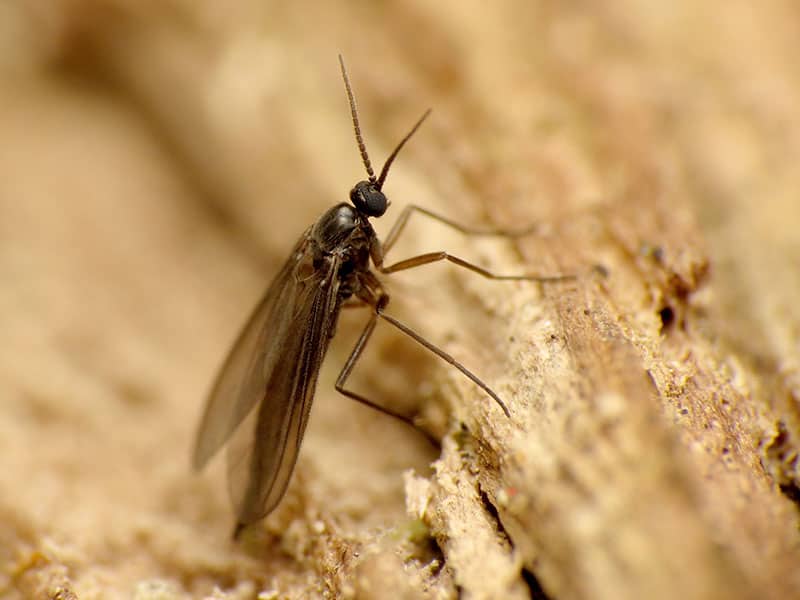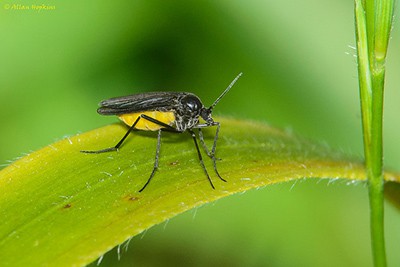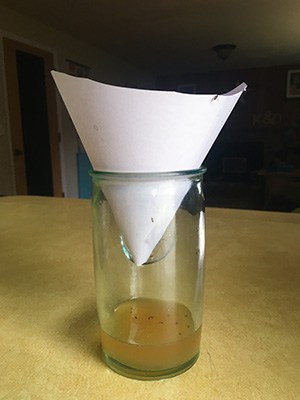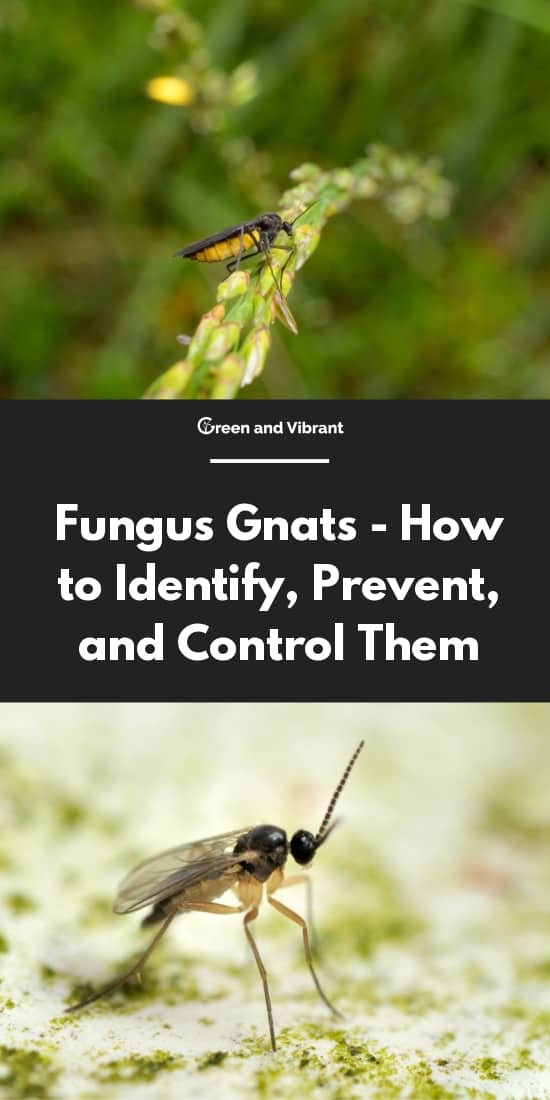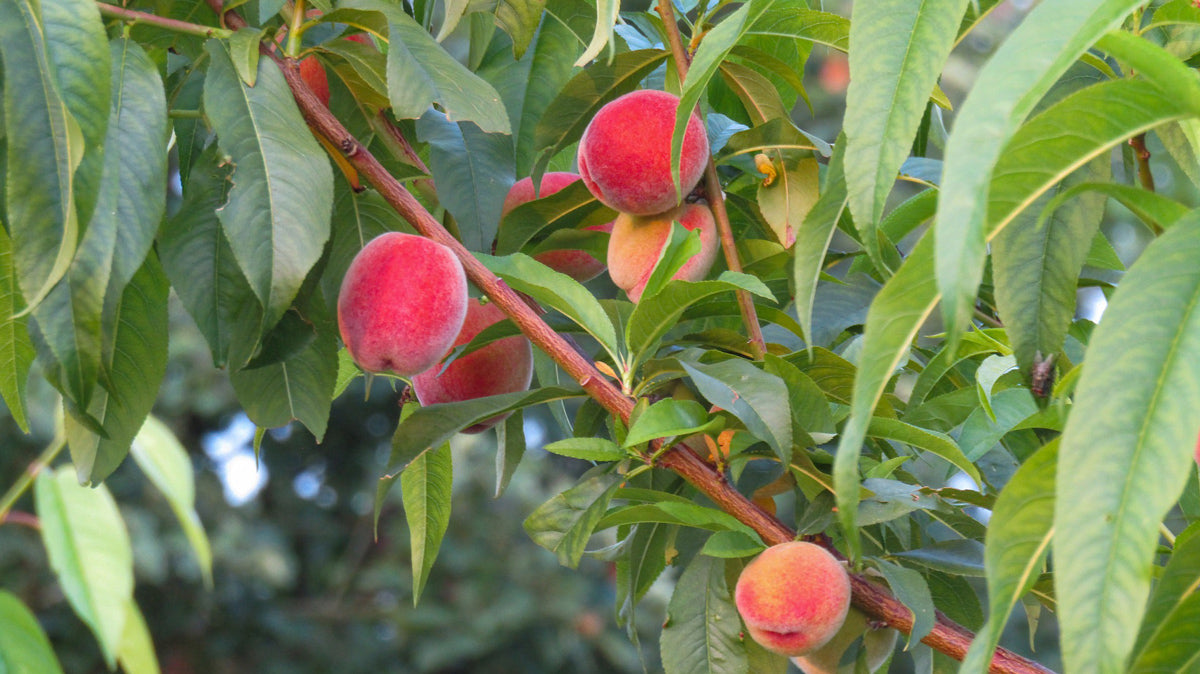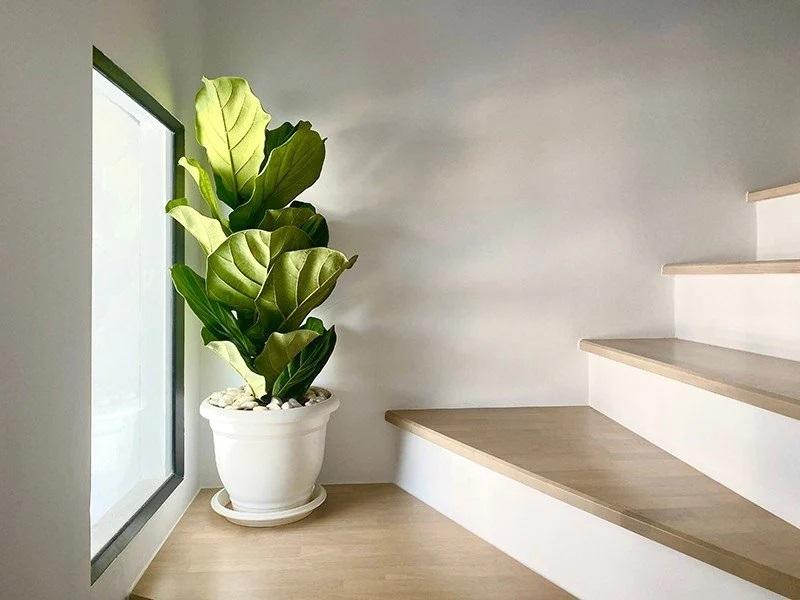When AeroGrow Inc. released the first model of the AeroGarden way back in ... Read More
- Home >
- Fungus Gnats – How to Identify, Prevent, and Control Them
Fungus Gnats – How to Identify, Prevent, and Control Them
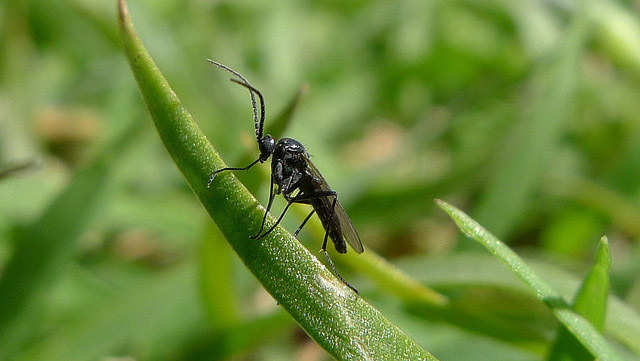
If you have spotted a small dark fly buzzing around your hydroponic garden, it’s highly likely that you will soon (if you aren’t already!) be fighting a frustrating battle against fungus gnats.
These irritating pests can thrive all year round on any indoor garden, including greenhouses and houseplants. They multiply quickly with the female fungus gnat laying up to a whopping 1000 eggs in her short one-week life span.
While the adult flies are nothing more than a nuisance, the larvae of the fungus gnat can wreak havoc on root systems if left untreated.
Quick Facts
| Origin | Unknown. Present on all continents except Antarctica (Source: Encyclopedia of Entomology, Peter Kerr). |
| Common Names | Sciarid flies, Mushroom flies, Dark-winged gnats, Manure flies |
| Family | Belongs to order of Diptera, superfamily Sciaroidea. |
| Scientific Names | Lycoriella spp, Bradysia spp |
| Identification | Dark gray/brown adults, 3-4mm in length with long legs Semi-transparent white larvae, legless maggots 6mm in length (Source: Royal Horticultural Society) |
| Favorite Plant Hosts | Any organic matter, especially in moist conditions |
| Remedies | Prevention, Sand, Vinegar, Sticky traps, Hydrogen Peroxide |
Where Do Fungus Gnats Come From?
Fungus gnats have a mysterious history, and it is not known where they originally hail from. What we do know is that they are now present on all continents of the globe with the exception of Antarctica.
Fungus gnats live in moist conditions all over the world, thriving anywhere where fungi, algae, or organic matter is present. They are particularly hardy against cold weather and so can survive by semi-freezing through the winter even in areas with very low temperatures.
Some species of fungus gnats are found predominantly in New Zealand. They are the predatory Arachnocampa luminosa that spin sticky webs within the caves of New Zealand and Australia to trap insects to eat (Source).
The fungus gnat belongs to a family named Sciaroidea. This superfamily encompasses seven smaller families in which six include types of fungus gnats. These are Sciaridae, Bolitophilidae, Diadocidiidae, Mycetophilidae, Ditomyiidae, and Keroplatidae.
Identification
Fully grown fungus gnats are a dark brownish gray colo and are around three to four millimeters in length. They are weak fliers and so can be spotted flying slowly around plants while they move fast when running along surfaces.
Slender in appearance, fungus gnats have long legs, long wings, and long antennae.
Fungus gnats are often confused with fruit flies as they are similar in size and present a nuisance indoors. They can be distinguished by their darker coloring and the areas in which they tend to be found; while fruit flies are primarily seen around fruit or rotting food, fungus gnats will be found in wet plant media, sink drains, and sewers.
Fungus gnats are also sometimes confused with mosquitos due to their similar body shape; fungus gnats, however, are much weaker flyers and they do not bite humans or pets.
The larvae of fungus gnats are semi-transparent pale colored maggots, which are around six millimeters long. They have shiny black heads, and if you look closely enough, you may be able to see the dark shape of their guts holding food they have just eaten (Royal Horticultural Society).
The eggs of fungus gnats are barely visible to the human eye. They are oval-shaped, glossy, white, and usually laid in clusters.
Types of Fungus Gnat
Fungus gnats come from six different families with each family encompassing many different species. Each family differs slightly in appearance and eating habits, so while it is easy to paint all fungus gnats with one brush, there can actually be considerable variations between species.
The most common type of fungus gnat hails from the Mycetophilidae family, but just within this family alone are at least 3000 identified species.
The fungus gnat that you and I are most likely to encounter feeds on, you guessed it, fungus! But not all fungus gnats do so with some species being predatory.
Life Cycle
The life of a fungus gnat is short-lived. After being laid, the eggs of a fungus gnat take between four to six days to hatch. The pale-colored maggots then reach full length at around two weeks, measuring approximately a quarter of an inch.
Once fully grown, the maggot will spin itself a thin cocoon, and transform into a pupa by shedding its skin. The pupal stage can last up to a week, following which, and adult fungus gnat emerges from the cocoon.
A mere few hours after breaking free from their cocoon, the adult is able to fly, and the females will quickly set about laying eggs. The adult fungus gnat will only live for around a week, but during this time, a female can lay up to 1000 eggs, and the cycle begins again (University of Vermont).
What Do They Eat?
Adult fungus gnats, aside from being pretty annoying, do not present much of a problem to plants and their owners. They feed only on small amounts of liquids, such as water and plant nectar, and do not bite. It is the larvae of the gnats that feed on plant roots and can become very damaging to plants and cuttings. The fungus gnat maggots will chew and strip roots, often causing poor growth in plants as well as discoloration and even a loss of foliage.
The larvae of fungus gnats are not particularly fussy, and will feed on any organic matter. However, they are known to be particular pests of mushrooms, potatoes, alfalfa, cucumbers, peppers, carnations, corn, soybeans, geraniums, lettuce, nasturtium, rape, wheat, and clover (University of Minnesota).
They are also particularly harmful to certain flowering plants, including violets, geraniums, carnations, poinsettias, and cyclamen.
Damage & Symptoms
The damage that plants sustain from fungus gnats is caused solely by the insects during their larval stage. The larvae feed on plant root systems, root hairs, algae, fungi, organic mulch, compost, grass cuttings, and leaf mold. It is the damage to root systems that causes the biggest problem for gardeners as plants will struggle to thrive with damaged roots.
Indoor gardens, whether inside the home or in a greenhouse, are the usual victims of fungus gnats. Outside, problems with fungus gnats are generally kept at bay by seasonal changes in the weather and natural predators. They provide a useful role as food for small creatures, such as reptiles and birds. They are also beneficial as pollinators and decomposers, producing nutrients for plants out of dead vegetation.
Unfortunately for us hydroponics enthusiasts, damage to indoor plants can become very severe. The symptoms of a fungus gnat infestation can include:
- Stunted plant growth
- Discoloration of foliage
- Loss of foliage
- Poor root growth
- Slimy trails on foliage
- Swarms of gnats around plants
- Wriggling white movement of planting media
Damage is usually at its worst on cuttings, seedlings, and more immature plants. Without a fully developed root system, plants are more vulnerable to being completely destroyed by the pest.
Fungus Gnat Control
Physical Control
Sticky Traps
I find this to be an especially effective method of eliminating adult fungus gnats. If they are killed and therefore prevented from laying eggs, then it will significantly limit the infestation.
Simply buy the yellow sticky traps and place them strategically around your plants, or make your own traps with bright yellow cards and Vaseline. It is a good idea to place some horizontally, with the sticky side facing down, above your plants. This will trap adult fungus gnats that are jumping up from your plant. Also, place the sticky traps around the perimeter of your garden to prevent the gnats from getting onto your plants.
Here is a good sticky trap pack you can get.
Trapro 20-Pack Dual-Sided Yellow Sticky Traps (6×8 Inches, Twist Ties Included)
Key Specifications
- Made of non-toxic environmentally friendly material
- Easily trap flying plant pests like fungus gnats, Aphids, etc.
- 6×8 inches. 20-piece pack
Sand
Fungus gnats lay eggs among the top layer of moist soil or plant media. By dressing your plants with sand, it will give the appearance of being dry, and discourage the insects from laying their eggs there.
Vinegar
Vinegar placed in small containers, such as jars will attract fungus gnats, and they will drown in the liquid. You can also cover the vinegar-filled jars over with cellophane, making them watertight, and then pierce one or two holes in the top of the cellophane. The fungus gnats will fly through the holes you have created to reach the sweet smelling vinegar. Even if they are too clever to drown in the vinegar, the will be unable to find their way back through the hole they entered and will be trapped and eventually die.
Biological Control
Hydrogen Peroxide: 3% hydrogen peroxide can be diluted into water and used to tackle a fungus gnat infestation in your hydroponic garden. Use less than two teaspoons for every gallon of water you use and consider starting off with an even lower dose of the hydrogen peroxide and working your way up.
Hydrogen peroxide is very effective at controlling a fungus gnat infestation, killing the pests on contact. However, it can also burn your plants, and should only be used with great care. I would recommend that you try other methods before resorting to the use of hydrogen peroxide in your garden, only using it if all else fails.
Commercial Control Products: There are several commercial products available, aimed specifically at treating fungus gnats in hydroponic gardens at varying levels. These can be quite effective, but require a good understanding of their potential side effects. Speak to your local garden center or hardware store garden expert for recommendations to suit your specific situation.
Prevention
Like many issues that can occur in plants, I recommend prevention as the best solution in the fight against fungus gnats. If you have experienced a fungus gnat infestation before, you will no doubt be keen to prevent encountering these little pests again in the future. One of the best ways, in my experience, is to simply prevent them from entering your indoor garden in the first place. Here’s how.
Keep doors and windows closed as much as possible so that adult fungus gnats cannot gain access to your indoor garden by simply flying in.
Ensure you have sufficient filters on any entry or exit points of the garden to deny access to small insects.
Thoroughly check over any new plants you introduce to the garden to ensure they are not already infected. Even a single fungus gnat can rapidly progress into a full blown infestation, so exercise caution when bringing new plants into your garden.
Another key preventative method to keep fungus gnats away from your plants is to limit moist organic matter. Fungus gnats like wet conditions and will not be able to thrive without sufficient moisture. Let your plants’ upper root zone dry out between waterings to discourage fungus gnats from laying eggs near it.
Keep on top of algae removal as well as the removal of any dead plant matter so that fungus gnat larvae have no easy food source to access.
Conclusion
Fungus gnats are a common problem for hydroponics gardeners, but they can be managed with relative ease, so don’t lose hope and don’t give up!
Prevention is the best cure, but if you’re already too late, then try out some of the simple techniques I’ve listed, and be sure to put preventative methods in place to reduce the chances of a repeat infestation.
Physical control methods are often enough to put an end to a fungus gnat infestation and they are not only simple, but will also not cost you very much at all. You could even try out some physical control methods with some items you probably already have at home, such as sand or vinegar.
The easiest biological control is a diluted mixture of hydrogen peroxide. Only be careful not to burn your plants.
Photo Credit: 1st image – John Tann
Related Content
-
Miracle Gro Aerogarden Reviews
-
Calcium Nitrate Fertilizer – How to Use It on Your Plants
Even gardeners with the greenest thumbs need a little help sometimes. Calc... Read More
-
How to Rebloom Orchids – Our Best Tips
Orchids are common houseplants because they are beautiful and usually fair... Read More
-
A Guide to Winter Plant Protection
One of the most disappointing things as a gardener is to spend all spring ... Read More
